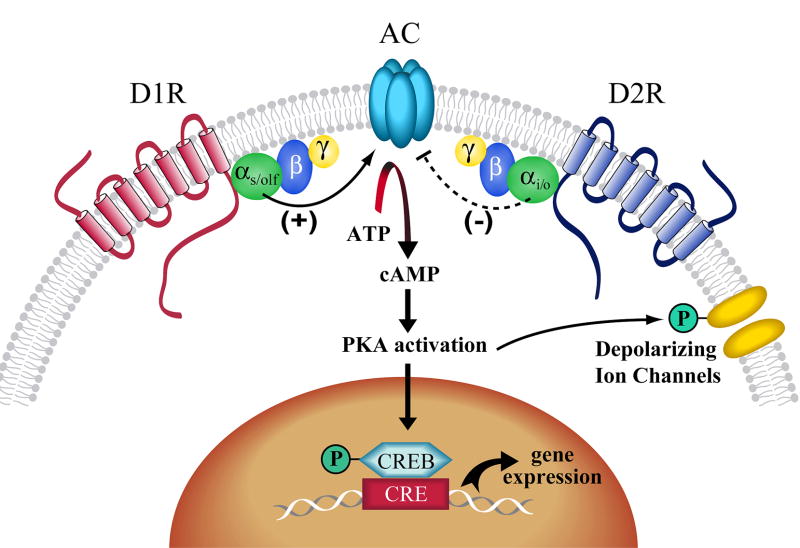Figure 2.
Dopamine receptors differentially regulate cAMP intracellular signaling and cellular activity (Missale et al., 1998; Neve et al., 2004). D1-like receptors (D1R) are associated with stimulatory G-proteins (Gαs and Gαolf) that when activated, increase the activity of the membrane bound enzyme adenylyl cyclase (AC). Active AC catalyzes the conversion of ATP to cAMP, which leads to the activation of protein kinase A (PKA) and subsequent increases in gene expression (through the phosphorylation of transcription factors, such as cyclic AMP response element binding protein (CREB)) and cellular activity (through the phosphorylation of membrane bound depolarizing ion channels). D2-like receptors (D2R), instead, are coupled to inhibitory G-proteins (Gαi and Gαo). When D2Rs are activated, the alpha subunit of these G-proteins inhibits the activity of AC, leading to decreased cAMP production, PKA activity, gene expression, and cellular activity. Solid lines ending in an arrowhead indicate stimulatory effects, while dotted lines ending in a bar indicate inhibitory effects.

